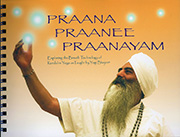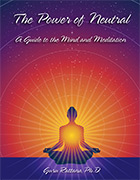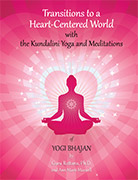Kundalini Yoga - Optimizing Your Practice
Kundalini Yoga focuses on the breath and on movement. Each exercise or posture (asana) is accompanied with special breathing (pranayama), hand and finger gestures (mudras), body locks (bhandas), chanting (mantras) and meditation, practiced together or in sequence, and designed to intensify the effects, leading to the freeing of energy (prana) in the lower body and the facilitating of its upward movement. A kriya is an exercise or group of them, with one or more of the other components, whose total impact is greater than the sum of the parts.
I did not know what to expect from doing KY but knew from the very first time that I did it, that it had the power to completely change my life. My very first experience of KY was amazing - it felt as if each and every cell in my body was vibrating and alive, as if for the very first time in my life!!! -
The physical performance of asanas in Kundalini Yoga is only half of the process. After completing each one it is important that you develop your awareness by pausing for a few moments or even a minute or two to observe its effects and the altered flow of energy. Each exercise generates its own specific effects, so learn to focus your mind on your feelings and subtle experiences. Becoming sensitive to, or listening, to your body will definitely multiply the benefits. It will enable the process of alignment, healing and relaxation, and develop your intuition. Knowing when to stop or press on, especially when trying something new, will also help avoid possible injury.

The science of breathing is called pranayama and is an integral part of Kundalini Yoga and Meditation. The breath and the state of the mind are intrinsically linked - the mind can be controlled by controlling the breath. It is common for people to take very shallow breaths 15 or more times per minute. Breathing more than ten breaths per minute creates a state of stress, which is made worse by breathing through the mouth. Breathing less than ten breaths per minute will create a state of peace and relaxation. Four or less breaths per minute will induce a state of meditation. It is important, also, to inhale and exhale through the nose. You should pay close attention to your breathing patterns during practice and how they control your mental state.
Mudras are gestures or hand positions, to lock and guide energy flow. By curling, crossing, stretching and touching the fingers and hands you can talk to your body and mind. Each area of the hand reflexes to a certain part of the mind or body.
Body Locks or "bhandas" are muscular contractions applied for the retention and channeling of prana. The term “lock” is analogous to the action performed by canal locks, which control the flow of water. Bhandas do not block the flow of prana but instead facilitate its release by opening up the spine.
Mantras as used in Kundalini Yoga are combinations of syllables, words or phrases in one of the sacred languages (like Sanskrit or Ghurmuki) and sometimes in English, which elevate or modify consciousness through their meaning, the sound itself, rhythm, tone, and even the reflexology of the tongue on the palate. The knowledge of the meaning and power of sounds and the use of the sound current is an integral part of the teachings of Yogi Bhajan.
Various types of meditation are employed. The most common are
- Chanting mantras out loud
- Reciting mantras silently
- Pranayama with and without silent mantra and
- Silent meditation
Silent meditation usually comes at the end and requires practice of a technique to open our minds to experience higher levels of awareness. In order to tune into the "silent" neutral channel, people must first clear the way with Kundalini Yoga, pranayama and mantra meditation.

Guru Rattana covers this subject in her book - The Power of Neutral.
During your practice, your spine is where you will feel the flow of energy. Parts of it will feel warm or even hot. This is a good indication of where your energy is flowing and where it is not. For the Kundalini, our vital creative energy, to flow, the whole spine must be open. Your goal is to gradually increase the flow of energy, increasing both your aliveness and awareness. It is not normal to experience huge rushes of energy accompanied by incredible feelings of ecstasy. Instead, you should experience a gradual and evolving expansion of consciousness and inner happiness.
Yogi Bhajan always taught the importance of strengthening and balancing of the navel point. His message was quite simple - that in order to get and stay in the heart center you first had to cultivate a powerful and stable base in your "lower triangle." This lower triangle consists of the lower three chakras - root, sex and navel.

How to build the lower triangle as a base for moving into the heart chakra, is explained in depth by Guru Rattana in the second edition of her popular classic manual - Transitions of the Heart-Centered World.
Always strive for balance in your Kundalini Yoga practice. This means that while you exercise, it is good to gently challenge yourself, but not to overdo it. It is always fine to shorten the duration of an exercise. You can also simply visualize yourself doing the exercise, while breathing and applying the lock. Yogi Bhajan always said that the group energy can carry you as though you were actually doing the exercise yourself. Most important thing when you are practicing at home or in class is to listen to your body. That is your best judge for what is and is not excessive.
While practicing, unless you are instructed to do otherwise, you should fix your concentration at the third-eye point – midway between the brow, one half inch up, and one half inch below the surface of the skin. Keeping your eyes closed, you can locate this point in your mind by gently turning your eyes inwards and upwards. Kundalini Yoga teaches us to remain aware of your breath, your movements, your body posture, and a mantra of your choice, while making the third eye your center of awareness.
It is recommended to practice at least 2 hours after eating, and in a clean, quiet place. Your feet should be bare. At home, practice should be approached with reverence, dedication, resolve and gratitude. Take the phone off the hook and really slow down for this precious time with yourself. Maximum benefit from Kundalini Yoga is achieved by practicing at the same time daily.
If you are unable to perform a Kundalini Yoga exercise as given, even after doing your best, then it is helpful to visualize yourself doing it, which also brings benefits, and helps facilitate your eventual successful performance of the exercise. Concentration on a mantra or on the breath can make holding a pose easier. Flexibility can be attained slowly, for example by holding the ends of a towel looped over the feet during forward bends. Don’t force anything. Everyone was a beginner once and, with consistent practice, improvement and transformation will be much faster than imagined.

You can practice it at home by signing up for Guru Rattana Online – our ground-breaking streaming video subscription service, and also supplement your studies using the wide range of Kundalini Yoga Books and Kundalini Yoga DVDs readily available here at low prices with free US shipping for retail orders.









